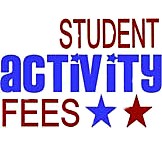I read the following update on the Radnor School District in the Main Line Suburban:
Assistant superintendent Kim Maguire outlined a plan to the Curriculum Committee that would have all Radnor ninth-, tenth- and eleventh-graders take the PSAT in October with school-district funding and with across-the-board scores allowing teachers to “check for trends [as well as] individual student trajectories.” The hope, Maguire said, “is that students will be more motivated.”
Asked if she meant more than for PSSAs, Maguire answered, “Yes.” Superintendent Linda Grobman said the school district would be able to “use the [test-score] information to help plan the instructional program.”
The Preliminary SAT/National Merit Scholarship Qualifying Test (PSAT) is a standardized test administered by the College Board and National Merit Scholarship Corporation. Other than practice for the Scholastic Aptitude Test (SAT), a high score on the PSAT is the only way to qualify for a National Merit Scholarship. The PSAT is great practice for the SAT as the results provide a sense of strengths and weaknesses.
The PSAT is offered for Conestoga High School students in their Sophomore and Junior years as preparation for the SAT exam. Radnor High School likewise offers the PSAT to their students in the tenth and eleventh grades. According to the article, the Radnor School District is suggesting that the District will offer the PSAT to the ninth graders in addition to the tenth and eleventh-graders.
Last month when there was discussion on Community Matters of Newsweek’s ‘best of high school’ lists, some commentors suggesting that T/E didn’t need to ‘keep up with the Joneses’ — that everyone knows that Conestoga High School is a great high school and the fact that it didn’t appear on Newsweek’s list was of little consequence. The jury may still be out on the importance (or impact) of Newsweek’s high school rankings, but the PSAT is another issue.
The PSAT is viewed as great practice for the taking of the SAT — and we now read that Radnor School District is discussing adding another practice PSAT year. Can we assume that if a student takes the practice exam three times before taking the SAT, that the student’s SAT scores will go up?
If a student takes the PSAT in both the ninth and tenth grades, is the student better prepared for taking the PSAT in the eleventh grade?
Why is the PSAT exam in the eleventh grade important . . . ? Answer — qualifying for the National Merit Scholarship awards is based on the scores on the PSAT taken as a Junior. Instead of only one practice exam, the Radnor School District students will have the opportunity to practice the PSAT twice before their Junior year. I would suggest that the number of Merit Scholars in Radnor School District will probably increase as a result.
The number of National Merit scholars is a widely quoted indicator of a given high school’s quality. To back up the high standard of T/E school district education, should the Curriculum Committee consider adding the option of PSAT testing for ninth graders? Should T/E fund PSAT testing for its students? Or, does T/E ignore what other neighboring districts are doing? Is there a risk that by increasing the number of practice PSAT exams, that teachers would teach to that exam rather than offering students a more traditional curriculum?
